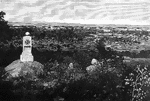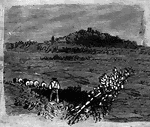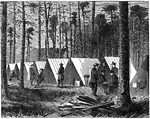The 1861-1865 Civil War Places ClipArt gallery offers 187 illustrations of places that are famous due to battles or other events during the American Civil War.

Libby Prison, Richmond
Libby Prison was a Confederate Prison at Richmond, Virginia, during the American Civil War.

Camp Lillie
Headquarters of General Freemont, Jefferson City, Missouri, October 1, 1861. Jefferson City is on the…
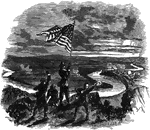
Top of Lookout Mountain
The Battle of Chattanooga and included the Battle of Lookout Mountain on November 25, 1863 during the…

Loudon Heights
"View from Loudon Heights, Va., showing Harper's Ferry, Maryland Heights, Bolivar, etc. Harper's Ferry,…

Manassasas Junction
"Manassasas Junction, showing the evacuated Confederate fortifications, abondoned camps and wagons,…
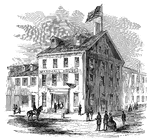
Marshall House
"The Marshall House, Alexandria, Va., where Colonel Ellsworth was assassinated by James W. Jackson,…
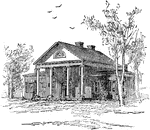
Marye House
The Marye House is located near Fredericksburg where skirmishes advanced towards during the Battle of…
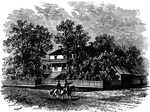
McLean's House: The Place of Lee's Surrender
The McLean residence, at the Appomattox Courthouse, where General Lee met with General Grant to sign…

Millen Prison Pen
"The Prison Pen at Millen, Ga., as it appeared previous to the arrival of General Sherman's Army. Our…
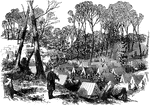
Camp of Ninth Massachusetts
"Camp of the Ninth Massachusetts Regiment in the woods, one mile from the Confederate fortifications,…

Paducah, Kentucky
"View of the town of Paducah, Ky., at the confluence of the rivers Ohio and Tennessee, the Northern…

Paris
"Paris, capital of Bourbon County, situated on Stoner Creek, Ky., occupied by Morgan's Guerrillas in…

Fort Pawhatan
"The campaign on the James River- General Butler landing at Fort Pawhatan."— Frank Leslie, 1896
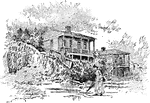
General Pemberton's Headquarters at Vicksburg
Pemberton's Headquarters is a two-story brick house that served as the headquarters for Confederate…

Police Headquarters
"Interior of the outbuilding attached to Marshal Kane's Police Headquarters, Holliday Street, Baltimore-…

Camp Princeton
"New Jersey Camp at Arling, Va., designated as Camp Princeton in honor of one of the Revolutionary battle…

Prison
"The humors of a prison- scene in a station-house cell, Washington, D. C., after the appointment of…

Prison Pen
"The great Prison Pen at Andersonville, Ga. The stockade was orginally eleven acres, which was increased…

Fort Pulaski
Fort Pulaski, on Cockspur Island at the entrance to the Savannah River, Georgia, was built by the United…
Rappahannock
"The city of Fredericksburg, VA., from the North side of the Rappahannock- from a sketch by our special…

Rappahannock Bridge
"Rebuilding of the railroad bridge over the Rappahannock to Fredericksburg, burnt by the Confederates…

Rappahannock River
American soldiers retreating across the Rappahannock river in Northwest Virginia. It shows an example…
Recrossing the Rappahannock
"The war in Virginia. General Meade recrossing the Rappahannock, October, 1863, before Lee's advance.…

Devastation in Richmond
The devastation in Richmond Virginia following the campaign against Richmond.

Robinson's House in Battle of Bull Run
The Robinson House belonged to a free African American during the First Battle of Bull Run. The house…

Rolla Camp
"Encampment of the Federal army near Rolla, Mo. The city of Rolla has been famous since the death of…
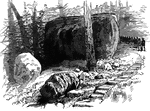
Ascent of Round Top
"Visit of Union and Confederate officers to Gettysburg, the ascent of Round Top."— Frank Leslie,…

Savannah, Georgia, Looking East
"View of Savannah, Ga., looking east, toward Fort Jackson. Savannah, the entry port of Georgia, is built…

Selden Estate
"The war on the Upper Potomac- Wilson's Cavalry foraging at the Selden Estate, Clarke County, Va."—…

Shiloh Church at Battle of Shiloh
The Shiloh Church is an important landmark during the Civil War during the Battle of Shiloh, also known…
Smith's Headquarters
"Carlisle, Pa., showing General Smith's headquarters, and the barracks destroyed by General W. H. F.…

Spotsylvania Courthouse
The Battle of Spotsylvania Court House, sometimes simply referred to as the Battle of Spotsylvania,…

Fort Stevens
"The operations near Washington, scene of the fight in front of Fort Stevens, July 12th-13th, 1864.…
Strasburg
"Reconnoissance of the Confederate poistion at Strasburg, VA., by a detachment of cavalry under General…
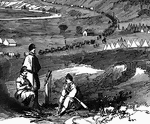
Strasburg Lookout
"View of the town of Strasburg, valley of the Shenandoah, occupied by the Federal forces under General…
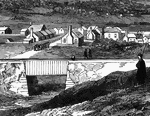
Bridge at Strasburg
"View of the town of Strasburg, valley of the Shenandoah, occupied by the Federal forces under General…

View of Strasburg
"View of the town of Strasburg, valley of the Shenandoah, occupied by the Federal forces under General…

Strasburg Woods
"In the Shenandoah Valley- General Fremont's division marching through the woods to attack the Confederates.…

Sutler's Store
"A sutler's store, Harper's Ferry, Va. The sutler's store at Harper's Ferry represents one of those…

Fort Thompson
"View of New Berne, N. C., from the interior of Fort Thompson after its capture by the Federal forces-…

Thoroughfare Gap
"Thoroughfare Gap, Va., a pass in the mountains on the Manassas Gap Railroad, near Strasburg, held by…


